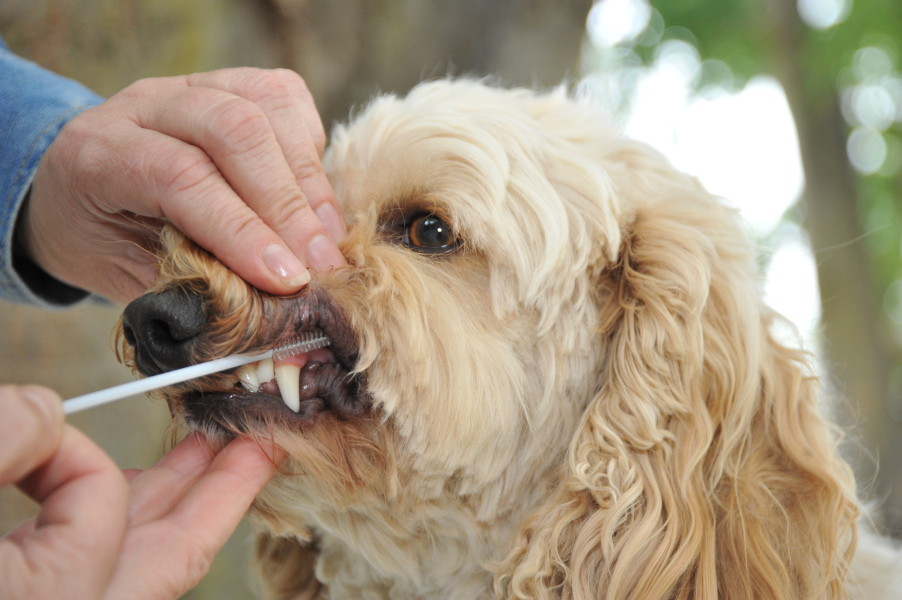Quick Summary
Click here for Price and Turnaround Time
Phenotype: Affected dogs initially present at 3-4 years of age with elevated intraocular pressure (increased pressure inside the eye) that can be followed by lens subluxation (partially displaced lens). At a later stage of the disease, the affected eye(s) become enlarged, followed by retinal and optic nerve degeneration and vision loss.
Mode of Inheritance: Autosomal recessive
Alleles: N = Normal, POAG = Primary Open-Angle Glaucoma
Breeds appropriate for testing: Petit Basset Griffon Vendeen
Explanation of results:
• Dogs with N/N genotype are expected to not have Primary Open-Angle Glaucoma. They cannot transmit this POAG allele to any of their offspring.
• Dogs with N/POAG genotype have one copy of the POAG allele and are expected to not have Primary Open-Angle Glaucoma but are carriers. They will transmit this POAG allele to 50% of their offspring. Matings between two carriers of POAG may, on average, produce 25% of puppies with Primary Open-Angle Glaucoma.
• Dogs with POAG/POAG genotypes are homozygous for the POAG allele and will display signs of Primary Open-Angle Glaucoma.
Sample Collection
Dog DNA tests are carried out using cells brushed from your dog's cheeks and gums. The preferred cytology brushes are sent to you by mail, or you may provide your own brushes. For accepted alternative brushes, click here
We recommend waiting until puppies are at least three weeks old before testing.

Step-By-Step:
- Make sure the dog has not had anything to eat or drink for at least 1 hour prior to collecting sample.
- When swabbing puppies, isolate each puppy from the mother, littermates and any shared toys for 1 hour prior to swabbing. Puppies should not have nursed or eaten for 1 hour prior to collecting sample.
- If collecting samples from more than one dog, make sure to sample one dog at a time and wash your hands before swabbing another dog.
- Label brush sleeve with name or ID of dog to be sampled.
- Open brush sleeve by arrow and remove one brush by its handle.
- Place bristle head between the dog’s gums and cheek and press lightly on the outside of the cheek while rubbing or rotating the brush back and forth for 15 seconds.
- Wave the brush in the air for 20 seconds to air dry.
- Insert brush back into sleeve.
- Repeat steps 5 - 8 for each unused brush in sleeve on a fresh area of cheek and gums. Make sure to use and return all brushes sent by the VGL. In most cases, it will be 3 brushes per dog. If using interdental gum brushes, please note that the VGL requires 4 brushes per dog and only moderate or wide interdental gum brushes are accepted.
- Do not seal brushes in sleeve.
- Place all samples in an envelope and return to the address provided.
ATTENTION:
- Do not collect saliva/drool – the key to obtaining a good sample is getting cheek cells on the swab
- Do not rub swab on the dog’s tongue or teeth – this will result in poor quality sample
- Do not collect a sample from a puppy that has recently nursed – the mother’s genetic material can rub off on the puppy’s mouth and contaminate the sample
Primary open-angle glaucoma (POAG) is inherited in an autosomal recessive manner, meaning that two copies of the POAG allele are needed to develop the disorder. Initial clinical signs include elevated intraocular pressure (increased pressure inside the eye) and partial dislocation of the lens. Pain does not seem to be a common feature so that owners only become aware of the disorder at a later stage when the eye becomes enlarged and/or vision problems are noticed, which occur due to retinal and optic nerve degeneration. The prevalence of glaucoma in the breed was determined to be 10.4% and the disorder is typically diagnosed around 3-4 years of age.
A 2015 study revealed that POAG in the Petit Basset Griffon Vendeen was associated with an inversion of the DNA sequence that caused disruption of the ADAMTS17 gene. The study found that 48 of 49 dogs with POAG were homozygous for this inversion, and one affected dog did not have any copies of the inversion. A 2017 study further showed that the ADAMTS17 inversion is not the only cause of open-angle glaucoma in the breed. The study examined 366 Petit Basset Griffon Vendeen and showed that 38 glaucoma-affected dogs did not have the ADAMTS17 inversion.
Testing recommendations: DNA testing for primary open-angle glaucoma can determine the genetic status of dogs. Dogs with one copy of the POAG allele are normal but are carriers. Matings between two carrier dogs may, on average, produce 25% of puppies with primary open-angle glaucoma.
